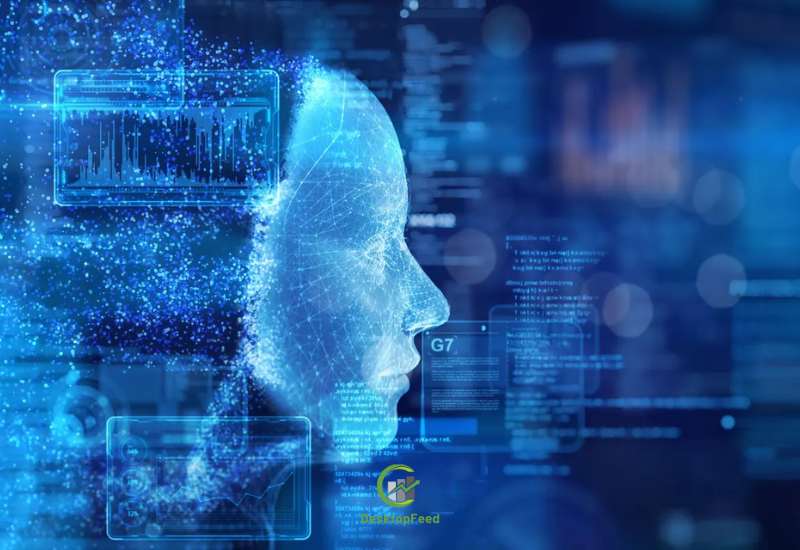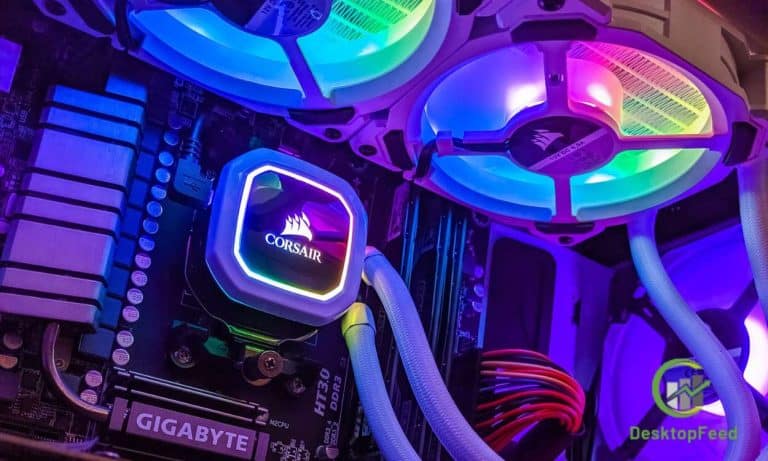What Is Artificial Intelligence?

The term “artificial intelligence” has many connotations. It can be anything from a Terminator-like figure that can act and think on its own, to a system that reads MRI scans for tumours. The term AI has also been used to describe machine learning and the process of automating repetitive learning and discovery through data.
Artificial Intelligence is a terminator like-figure that can act and think on its own
The most prominent form of AI is “narrow AI,” which is designed to do one particular task well. This type of AI is still far from being a terminator-like figure, but it does surpass human performance in many instances. For example, it can recommend products for e-commerce users and can even predict the weather. Narrow AI is still in its early stages, but it is already superior to humans in many tasks, especially in controlled environments and under strict parameters.
The latest developments in AI technology began in the late 1990s, when the explosion of data and increased computational power created a renaissance in AI. Since then, advances have been made in machine learning, computer vision, robotics, and natural language processing. These advancements have made AI more tangible than ever before, and companies like Google and IBM have begun using them in everyday life.
Soft computing, on the other hand, was first used in the 1980s. It consists of neural networks, genetic algorithms, and fuzzy logic. Soft computing is an alternative to hard-core AI, as it can accept uncertainty, partial truth, and approximation. Most successful AI systems today are examples of this type of artificial Intelligence.
As AI continues to become more sophisticated, there are concerns about the ability of AI to commit crimes. One of the greatest concerns of AI researchers is that it will be misused by evil people. In some cases, AI could be used for crimes, such as killing people.
It automates repetitive learning and discovery through data
Artificial Intelligence is a form of computer technology that automates repetitive learning and discovery through data. AI uses several types of algorithms to get the most from data, including supervised and unsupervised methods. Supervised learning algorithms are trained using examples that have been labeled, while unsupervised methods require that the data be unlabeled. Reinforcement learning algorithms are applied in many fields, including navigation, gaming, and robotics.
Artificial Intelligence is becoming a popular field for many industries. For instance, AI is being used in healthcare applications to track and analyze medical reports. It has also been used to create personal assistants that can remind patients to take their medicines or eat healthier. It is also used in the retail industry to make virtual shopping experiences more interactive and personalized, and to discuss different purchase options with customers. AI can also be used in factories to analyze data from Internet-of-Things devices and predict the load and demand of equipment and machinery.
It can read MRI scans to check for tumours
Artificial Intelligence is becoming a key part of modern medicine. Researchers are developing AI systems that read CT scans and MRIs to detect cancer. These new systems are based on deep learning and can learn from real-world examples. One of the first applications involves the diagnosis of lung cancer. Researchers have trained the new systems to identify subtle nodules on lung CT scans.
Radiologists are limited in their vision, and often miss lung spots. This means that about 35 percent of lung nodules are missed on initial screening. AI systems can detect these small growths, which are invisible to the naked eye. This technology is already being used by radiologists to improve their detection rates. However, some experts are worried that the Artificial Intelligence systems could lead to unnecessary tests and treatments.
The AI system can analyze a patient’s lung scans as a 3D object and compare changes to previous scans. It can detect up to 5% more cancer cases and cut down false-positives by as much as 11 percent. It can also detect sclerosis plaques over time. It can also reduce the use of gadolinium-based contrast agents, which are widely used in MRIs.
The technology can also help radiologists diagnose disease better and monitor treatment more efficiently. Artificial neural networks can recognize patterns linked to specific conditions. It works by following a set of instructions and learning from data.
It can predict if a user is on the verge of quitting
AI can be used to predict if a user is on the brink of quitting their job. This technology works by analyzing data and determining patterns. By learning a user’s job performance, it can identify patterns that could indicate whether the user is about to quit their job. This could help employers keep employees who may be on the verge of quitting.
With employees quitting jobs at record rates, companies are having a difficult time keeping them and luring them back. This is especially true in today’s world, where employees frequently work from home. Remote working makes it more difficult to tell if someone is unhappy with their job. In addition, new employees often can’t attend face-to-face training sessions or shadow experienced employees to gain knowledge and experience about the company. Companies are turning to AI for this purpose, but this technology still has its limitations.
While the accuracy of such algorithms is still unknown, some firms have developed predictive AI systems that analyze employees’ emails and communication patterns. Using this technology, Genpact has created chatbots that ask relevant questions during milestones in the employment lifecycle. This helps HR leaders identify employees who are unhappy.
IBM is among the companies using AI to predict employee leaving plans. IBM’s AI program, called “proactive retention,” predicts employee departures with 95 percent accuracy. The AI tool uses thousands of pieces of data to create a prediction and alerts managers. It then advises managers to “do something now” to prevent the employees from leaving. This technology could help prevent employees from leaving their jobs, but the use of AI in the workplace raises privacy and ethical concerns.
It can automate high-volume, computerized tasks
Artificial intelligence is a powerful tool for automating high-volume, routine tasks, such as data processing and data entry. By using artificial intelligence, these tasks can be performed more efficiently, accurately, and with fewer human errors. The technology is capable of analyzing large volumes of data, identifying patterns, and identifying opportunities for automation and ease of use. AI works through machine learning, a process that allows programs to improve with additional data.
AI can read and extract detailed information from data, and it can do so from both paper and electronic formats. It can read stacks of contracts and understand purchase terms, fee structures, exclusions, and termination clauses. It can also assess and interpret data from different sources.
As Artificial Intelligence is increasingly used in cybersecurity, it can help to reduce the time required to detect and resolve security threats. This means fewer human security experts are needed. By automating repetitive tasks, AI can help to reduce response times and compensate for a shortage of cyber talent. Examples of automated processes include detecting phishing attacks, prioritizing vulnerabilities, and tracking suspicious emails. AI can also help maintain machines, automatically adjusting temperatures and sending robots to execute maintenance tasks.
By automating high-volume, repetitive tasks, AI can enhance the performance and productivity of enterprises. Its ability to understand data is unmatched by humans, and it is highly efficient at performing tasks that once required human intelligence. In some cases, the increased efficiency of these tasks will translate to substantial business benefits. For example, Netflix has used AI to improve the personalization of its product offerings. With this technology, it was able to increase its customer base by 25 percent in 2017.
It uses open-source software
Open-source software has played a significant role in artificial intelligence research and innovation. This open-source software enables researchers to share their code and data to replicate experiments and learn new insights. Researchers have used open-source software to speed up their research and development. Open-source software is gaining popularity, and it’s estimated that more than 65% of enterprises use it.
Several open-source AI frameworks are available for commercial AI use. For example, Apache Spark and Apache Kafka are popular open source software frameworks that make machine learning in real-time possible. These frameworks are used by researchers for classification and clustering. Similarly, Apache SystemML is a flexible open-source AI platform that focuses on solving complex mathematical problems. This software can be used for training and deep learning using GPUs and neural networks.
Another open-source AI tool is the Mycroft voice assistant, a use-case-focused AI tool. Another open-source AI software that is widely used is OpenCV, a library of AI algorithms developed by Intel in 1999. OpenCV is now governed by a nonprofit foundation that provides user support, developer assistance, and community resources. The organization recently launched the OpenCV AI Kit crowdfunding campaign, which will help developers create new hardware modules for the software.
The power of Artificial Intelligence is increasing, with its use influencing real-world applications and consumer applications. Open-source AI tools can be used in many different fields, including robotics, food, and financial trading. With these advances, businesses and people will be able to reap the benefits and make a positive impact in multiple fields.
For More Articles Visit: Desktopfeed






